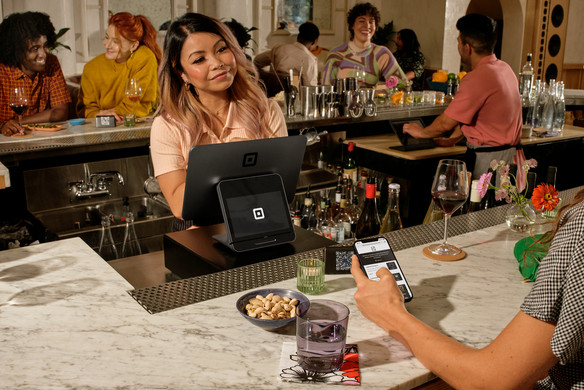Table of contents
Restaurant operators and their customers have both benefitted from the digital connections they forged during the pandemic through mobile apps, QR codes, and other technologies. These digital relationships have accelerated the evolution of technology in the foodservice channel, creating efficiencies for operators and adding convenience for consumers.
The Square Future of Restaurants report found that nearly half of restaurants (45%) said they plan to continue offering QR code menus even after the pandemic subsides, and nearly eight in 10 consumers (78%) said they see benefits in using digital menus when dining in a restaurant. About the same proportion of consumers (79%) said they prefer to order through online kiosks rather than directly through staff.
Contactless and tableside payments have also gained more acceptance. More than half of restaurants (52%) said they plan to offer tableside payment options.
In addition to optimizing the ordering and payment processes, foodservice operators are using tools such as digital loyalty programs, social selling, and digital feedback mechanisms to drive sales, ease staffing pressures, and enhance their marketing and communications capabilities.
How Restaurants Are Using Immersive Technology
The adoption of digital connectivity among both operators and consumers is creating opportunities for collaboration that links restaurants and their customers much more deeply.
Many of these digital capabilities are already being deployed in restaurants to some degree.
- Customer feedback has long been digitized via digital receipts, for example, which provides a convenient way for operators to gather data on customers’ experiences and engage with them after their visit.
- Social selling is another digital strategy that restaurant operators are using to deepen their engagement with their customers. This can be an especially useful tool for restaurants that have expanded their operations to include new lines of business, such as retail sales of packaged goods, or events such as wine tastings or cooking classes.
- Digital loyalty programs have long provided a platform for connected commerce, allowing operators to personalize offers based on individual customer preferences and provide incentives to customers to boost trip frequency and check size. Customers, meanwhile enjoy the convenience of earning rewards automatically.
Some operators have also begun to offer digital tools such as dynamic, real-time menu availability. Rather than downloading a static menu from a QR code, diners instead unlock an intuitive interface that allows them to order from their tables, and operators can use it to promote specific items in real time. Items can be removed instantly when they become unavailable.
The Future of a More Immersive Restaurant Experience
When diners are connected to restaurants via collaborative tools, it unlocks possibilities for enhanced service throughout the dining experience. Customers might be able to see updates on the status of their on-premise orders, for example. Restaurant staff could also be alerted of changes to customers’ orders or if tables needed drink refills or to be bused.
Similarly, customers could be prompted to add additional items, such as desserts, or notified of limited-time offers, such as drink specials, as they become available.
Other possible functionality could include the ability for customers to see a running tally of their bill or the ability for operators to provide games or contests to earn rewards in real time.
Restaurants are also looking for ways to provide increasingly higher levels of personalization based on customer preferences, order histories, and other factors. Machine learning and artificial intelligence can drive menu suggestions, rewards, and promotions in much more dynamic ways.
The end result is a higher level of customer service in which the digital experience does not stop when the order is placed and does not necessarily end when the check is paid.
Technology has become a vital element of restaurants’ customer relationships, from ordering to payment and beyond. It is evolving so that any customer who downloads a QR code or checks in at a digital kiosk can enjoy a much broader level of service and personalization. The digital experience is fast becoming one with the physical experience of restaurant dining.
![]()












